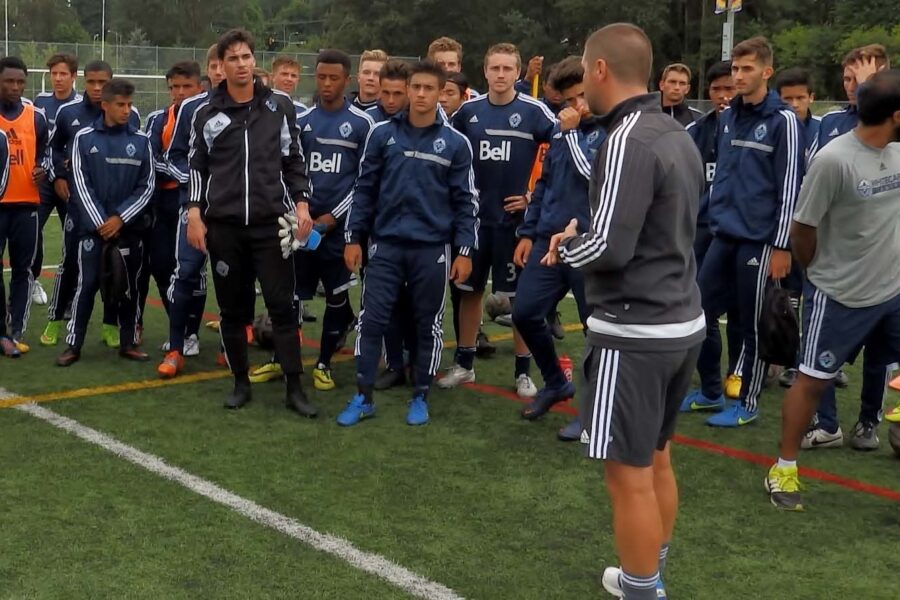Each level of the club learns the importance of video early on, allowing players to improve and develop more quickly.
Andy Peat is the video analysis coach for the Vancouver Whitecaps. In this four-part blog series, Peat will describe how the Whitecaps’ program uses video and how vital it is to its success.
The Vancouver Whitecaps team structure can be divided into two main groups: professional teams and residency teams. The residency teams look to develop and harness the capabilities of players to see them eventually graduate to the professional level. Players such as Russell Teibert and Alphonso Davies have progressed through the program and have made the MLS team. The goal is to continue to develop and progress players through the residency program into the professional environment.
The club’s soccer operation department has worked hard to align our analysis structure from top to bottom through a commitment to people and products. Coaches of every age group have analysis tools to aid the development of their young players. Most clubs save their main resources for the professional players and first teams, but we found consistency and continuity are important aspects of our strategy regarding continued player development throughout the club.
With four age groups for our residency teams, it’s critical our players can continue their development outside of the on-field training environment. The head coach, assistant coaches and goalkeepers of each Whitecaps residency team have their own analysis system to review match performances. We feel this investment with Hudl leads to a greater impact off the field, in the hours where the team or individual cannot train on the field or in the gym. The great thing is that Hudl allows all the players to access their footage on their own.
The players use Hudl to review key moments of their performance. Hudl enables the coaches to set specific tasks individually, as a group or an entire team.
Andrew Foster, our residency analysis coordinator, shares a large body of individual clips with our team every weekend. The players are encouraged to watch, and the coaches are right there to guide them.
It’s important that we create a culture of video for our players. When they come through the system familiar with watching themselves and reviewing performances, they know how to improve. Video becomes more and more impactful as they progress in age groups and onto the professional team.
As a club, we’re in the early stages with our coaches and players on how to best maximize this system—we’ve recently gone live with Gamebreaker and Hudl in our residency. This is an exciting space for the Whitecaps to be in, especially for the youth players in the program.
Check back soon for Andy's upcoming blogs:
- The Five Stats on Hudl that Every Academy Coach Needs to Know
- Why Hudl is an Important Tool for Multi-team Soccer Clubs
- Bringing Video to the Classroom: How to Run a Video Session for Soccer Teams

